
The Game of Life, also known simply as Life, is a cellular automaton devised by the British mathematician John Horton Conway in 1970. It is a zero-player game, meaning that its evolution is determined by its initial state, requiring no further input. One interacts with the Game of Life by creating an initial configuration and observing how it evolves. It is Turing complete and can simulate a universal constructor or any other Turing machine.

Life, the Universe and Everything is the third book in the six-volume Hitchhiker's Guide to the Galaxy science fiction "trilogy of six books" by British writer Douglas Adams. The title refers to the Answer to Life, the Universe, and Everything.

Brickwork is masonry produced by a bricklayer, using bricks and mortar. Typically, rows of bricks called courses are laid on top of one another to build up a structure such as a brick wall.

The Rule 110 cellular automaton is an elementary cellular automaton with interesting behavior on the boundary between stability and chaos. In this respect, it is similar to Conway's Game of Life. Like Life, Rule 110 with a particular repeating background pattern is known to be Turing complete. This implies that, in principle, any calculation or computer program can be simulated using this automaton.

Highlife is a cellular automaton similar to Conway's Game of Life. It was devised in 1994 by Nathan Thompson. It is a two-dimensional, two-state cellular automaton in the "Life family" and is described by the rule B36/S23; that is, a cell is born if it has 3 or 6 neighbors and survives if it has 2 or 3 neighbors. Because the rules of HighLife and Conway's Life are similar, many simple patterns in Conway's Life function identically in HighLife. More complicated engineered patterns for one rule, though, typically do not work in the other rule.

In a cellular automaton, a finite pattern is called a spaceship if it reappears after a certain number of generations in the same orientation but in a different position. The smallest such number of generations is called the period of the spaceship.
In a cellular automaton a puffer train, or simply puffer, is a finite pattern that moves itself across the "universe", leaving debris behind. Thus a pattern consisting of only a puffer will grow arbitrarily large over time. While both puffers and spaceships have periods and speeds, unlike puffers, spaceships do not leave debris behind.
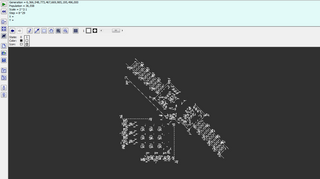
Hashlife is a memoized algorithm for computing the long-term fate of a given starting configuration in Conway's Game of Life and related cellular automata, much more quickly than would be possible using alternative algorithms that simulate each time step of each cell of the automaton. The algorithm was first described by Bill Gosper in the early 1980s while he was engaged in research at the Xerox Palo Alto Research Center. Hashlife was originally implemented on Symbolics Lisp machines with the aid of the Flavors extension.
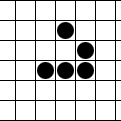
The glider is a pattern that travels across the board in Conway's Game of Life. It was first discovered by Richard K. Guy in 1969, while John Conway's group was attempting to track the evolution of the R-pentomino. Gliders are the smallest spaceships, and they travel diagonally at a speed of one cell every four generations, or . The glider is often produced from randomly generated starting configurations. John Conway remarked that he wished he hadn't called it the glider. The game was developed before the widespread use of interactive computers, and after seeing it animated, he feels the glider looks more like an ant walking across the plane.

In a cellular automaton, a gun is a pattern with a main part that repeats periodically, like an oscillator, and that also periodically emits spaceships. There are then two periods that may be considered: the period of the spaceship output, and the period of the gun itself, which is necessarily a multiple of the spaceship output's period. A gun whose period is larger than the period of the output is a pseudoperiod gun.
In Conway's Game of Life and other cellular automata, a still life is a pattern that does not change from one generation to the next. The term comes from the art world where a still life painting or photograph depicts an inanimate scene. In cellular automata, a still life can be thought of as an oscillator with unit period.

Lego Space is a Lego theme that features astronauts, spaceships, and extraterrestrial life. Originally introduced in 1978, it is one of the oldest and most expansive themes in Lego history, and contains over 200 individual sets. It was marketed under the Legoland banner until it became Lego System in 1992.

A rake, in the lexicon of cellular automata, is a type of puffer train, which is an automaton that leaves behind a trail of debris. In the case of a rake, however, the debris left behind is a stream of spaceships, which are automata that "travel" by looping through a short series of iterations and end up in a new location after each cycle returns to the original configuration.

In cellular automata such as Conway's Game of Life, a reflector is a pattern that can interact with a spaceship to change its direction of motion, without damage to the reflector pattern. In Life, many oscillators can reflect the glider; there also exist stable reflectors composed of still life patterns that, when they interact with a glider, reflect the glider and return to their stable state.
Gliding flight is heavier-than-air flight without the use of thrust; the term volplaning also refers to this mode of flight in animals. It is employed by gliding animals and by aircraft such as gliders. This mode of flight involves flying a significant distance horizontally compared to its descent and therefore can be distinguished from a mostly straight downward descent like with a round parachute.

In Conway's Game of Life and similar cellular automaton rules, a spark is a small collection of live cells that appears at the edge of some larger pattern such as a spaceship or oscillator, then quickly dies off.
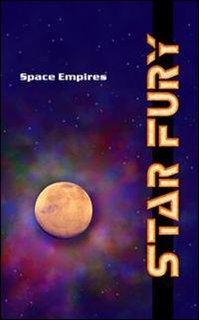
Space Empires: Starfury is an action video game developed by Malfador Machinations and published by Shrapnel Games on September 22, 2003. The game is set in a Space Empires universe containing planetary systems linked by warp points, or wormholes. The game allows the player to control a single spaceship to explore the universe.
In Conway's Game of Life, the speed of light is a propagation rate across the grid of exactly one step per generation. In a single generation, a cell can only influence its nearest neighbours, and so the speed of light is the maximum rate at which information can propagate. It is therefore an upper bound to the speed at which any pattern can move.
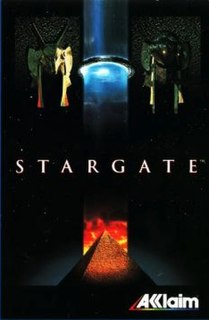
Stargate is a platform game by Acclaim Entertainment for the Super Nintendo Entertainment System and Sega Genesis/Mega Drive. It follows the adventures of Colonel Jack O'Neil as he struggles to free the slaves of Abydos, defeat Ra, and get his mission team back home using the stargate device. The game is based on the 1994 film of the same name.
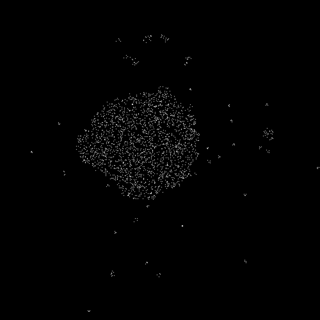
Critters is a reversible block cellular automaton with similar dynamics to Conway's Game of Life, first described by Tommaso Toffoli and Norman Margolus in 1987.
















